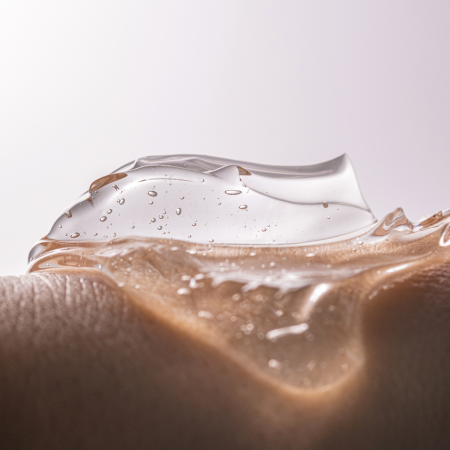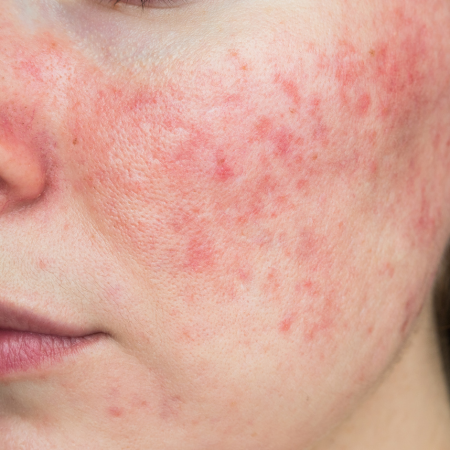What is a thread lift, and how does it work?
Thread lifts are an alternative to the various plastic surgeries that can be opted for these days. The procedure offers minimally invasive techniques with good results. Thread lifts are a form of cosmetic surgical procedure in which special absorbable sutures are used to lift your face and neck area. These sutures are inserted into the skin and then pulled tight to lift your face and neck. A thread lift can improve the contour of your face, reduce the effects of wrinkles, and give you a younger, healthier-looking face. Studies have shown that the effects of a thread lift last up to 1 year.
What is a thread lift?
A thread lift
is a minimally invasive type of cosmetic procedure designed to tighten sagging skin on the face, neck, and other desired areas. Commonly referred to as a "lunchtime facelift", the procedure involves inserting sutures beneath the skin that are used to reposition loose skin to give it a more youthful appearance. Thread lifts are most commonly used to address jowls and sagging beneath the eyes, but they can also be used on other areas of the body such as the arms, abdomen, buttocks, and even breasts.
When considering whether or not a thread lift is a good option for you, it’s important to understand both the advantages and disadvantages. On the one hand, thread lifts offer shorter recovery periods than traditional surgical options such as facelifts and neck lifts. They tend to be less expensive than these traditional procedures. Thread lifts may also be suitable for people who are not yet ready for a full facelift but still want to improve their appearance.
On the other hand, thread lifts tend to provide only minimal improvement in terms of lifting saggy areas of skin. The results may not last very long; typically, they last about one year before needing additional treatment.
How does a thread lift work?
A thread lift involves the insertion of temporary sutures (or threads) into different areas of the face in order to contour the skin. This procedure is an attractive option for individuals wishing to achieve a more youthful appearance without the need for surgery or anesthesia. During the procedure, thin barbed sutures are inserted beneath the skin. Over time, as these sutures dissolve, they contract and pull the skin upward, resulting in a lifted and more youthful appearance.
Thread lifts have several advantages over traditional surgical procedures. First, it is less invasive than traditional facial surgery, with no cutting or alteration of muscle structure, making it less risky than many other methods of facial rejuvenation. Additionally, thread lifts can be done quickly in a minimally invasive way and require minimal to no downtime after treatment, unlike many other treatments, such as facelifts, that require lengthy recovery times. Finally, thread lifts can produce rapid results, with effects lasting up to one year or longer if repeated treatments are administered.
On the contrary, although thread lifts can provide relatively quick and impressive results, there are potential drawbacks to consider as well. When performed incorrectly or by inexperienced practitioners, thread lifts can cause complications such as scarring or infection. Furthermore, thread lifts are typically associated with only subtle improvements rather than dramatic changes, meaning that patients may need to undergo multiple treatments or pursue alternative methods if they wish to achieve larger changes to their features. Despite these drawbacks, thread lifts remain one of the fastest-growing procedures for facial rejuvenation.
Benefits of a Thread Lift
Thread lifts are quickly becoming a popular nonsurgical cosmetic procedure due to their ease and minimal downtime. This minimally invasive treatment offers several advantages when compared with a traditional facelift, including quick results, affordability, and minimal scarring. Thread lifts can also be used as an alternative to facial fillers or toxin injections for those who do not want to use these treatments.
The most significant benefit of a thread lift is that there is no lengthy recovery time required. Typically, the process is done in less than 60 minutes, and patients can go home and resume normal activities within a few hours of the procedure. The procedure itself is very easy on the patient, and most report feeling minimal discomfort during the process. Additionally, because the area being treated is only numbed temporarily, there are no long-term side effects like there would be if anesthesia were involved.
However, some potential risks associated with thread lifts include bruising or swelling at the site that may last for days or weeks after the procedure. Furthermore, having too many threads placed can result in visible lumps under the skin, which may require revision surgery to correct. Furthermore, thread lifts don't provide permanent results, and patients need to plan on undergoing repeat procedures in order to maintain their appearance.
Minimally invasive treatment
The thread lift is a minimally invasive procedure that does not require any incisions or sutures. Instead, small cannulas are inserted through the skin to place fine, barbed threads beneath the skin that can instantly provide lift and provide long-lasting results.
Thread lifts can benefit those who don’t want to go through longer and more logistically complicated surgical procedures, such as a facelift. The thread lift is much less invasive and also carries the potential for much shorter recovery periods and lower risks of complications such as infections.
It should be noted, however, that because the technique is so minimally invasive, it does not provide an extremely dramatic lift or last as long as more traditional surgical procedures. That said, it still carries numerous benefits for those who do not wish to undergo a more involved operation with general anesthesia and a much longer recovery time afterwards.
Potential Side Effects
Like any type of medical procedure, thread lifts come with some potential side effects that are important to be aware of before you decide to undergo the procedure. Some of the more common side effects include discoloration or bruising at the insertion site and mild swelling throughout the affected area. These side effects typically resolve within a few days after the procedure. Rarely, more serious risks like infection, a poor healing response, nerve damage, or asymmetrical outcomes as a result of an inexperienced practitioner placing uneven threads can happen. It is important to weigh all available options in order to determine which procedure is right for you.
Before undergoing a thread lift, it is always recommended that you consult with your provider and discuss both the potential benefits and risks associated with the procedure in order to make an informed decision.
It is also important to note that although thread lifts can provide immediate results, most results will gradually diminish over time as your body begins to metabolize the sutures used during the procedure. This means that follow-up treatments may be necessary in order for you to maintain your desired appearance and achieve prolonged results from your thread lift.
Results and long-term effects
Thread lifts are an effective way to give patients a youthful-looking appearance without the invasiveness of a conventional facelift. However, it may not provide the same dramatic results as a surgical facelift.
While some patients may experience positive effects immediately following a thread lift procedure, more noticeable results may take several weeks or months to become apparent as the thread stimulates collagen production. Results may also vary depending on individual skin types, the number of threads used in the treatment, and how well an individual patient responds to the treatment.
The longevity of the results from a thread lift is also variable. On average, studies have found that the results can last up to 1 year, depending on factors such as an individual's lifestyle and skin care habits after the procedure. Various follow-up treatments may be required to maintain longer-lasting results.
The fact that thread lifts do not provide permanent results like a conventional surgical facelift is one potential drawback. Additionally, it is possible for threads to migrate over time and cause adverse side effects, which need to be addressed through further procedures if necessary. Overall, though, it is believed that when carried out by qualified professionals using approved materials, thread lifts offer good long-term results with little risk.
What areas of the body can a thread lift be used to treat?
Thread lifts can be used to treat a variety of facial areas, including the forehead, eyes, cheeks, jawline, and chin. By using threads with small barbs or cones, the threads are placed into the facial skin to create an immediate lift in sagging skin that can last for up to one years. The threads also stimulate collagen production in the skin cells around them, which adds to the overall structural integrity of the area. Thread lifts can also be used to treat other areas of the body, such as the neck, decolletage, arms, and abdomen.
How long does a thread lift last?
A thread lift typically lasts up to 1 year, depending on the type of product used. Results may vary from person to person because factors like age and lifestyle can affect how long a thread lift lasts. Over time, these sutures dissolve gradually, allowing the face to settle naturally back into its original state. Although the threads will eventually disappear, the supportive collagen network they created during the initial procedure will endure. This is why many people report that the effects of their thread lift last longer than one season or even one year.
What are the advantages of thread lift treatment over alternatives?
Thread lift treatment offers a number of advantages over traditional alternative treatments such as facelifts and injectables. Firstly, the thread lift procedure is much less invasive than alternatives, requiring only local anesthesia instead of a general anesthetic. The procedure itself is also much shorter, taking between 45 minutes and an hour, compared to approximately two hours for more traditional methods. This results in a much faster recovery time and allows patients to return to their normal daily routines almost immediately after treatment.
Additionally, thread lifts can provide very natural-looking results due to the precise placement of threads, which adjust underlying tissues without causing excessive stretching or unnatural features. Since threads are only used in specific areas, any changes that occur from thread-lift treatment will look more like adjustments than complete makeovers. Also, with no incision required, it reduces the risk of scarring that other treatments might cause. Finally, thread-lift treatments are relatively inexpensive compared to surgical solutions and can be repeated as needed to maintain desired results.
Contact MINT™PDO for high-quality threads
Are you prepared to take your aesthetic practice to new heights? Look no further than MINT™ PDO for the utmost in thread quality, delivering safe and remarkable results for your patients. Our threads are meticulously crafted using medical-grade materials and undergo rigorous testing to meet the most stringent standards of excellence and safety. Whether your objective is to enhance your patients' innate beauty or combat signs of aging, MINT™ PDO threads are your ideal solution. Don't hesitate—reach out to us now to discover more and personally experience the exceptional MINT™ PDO difference.




